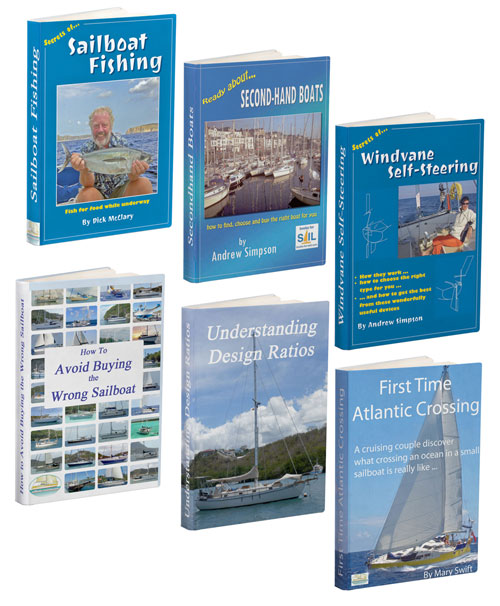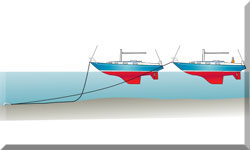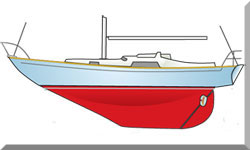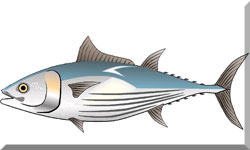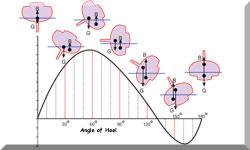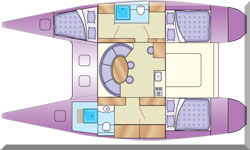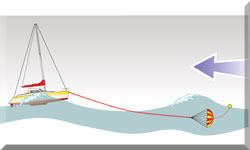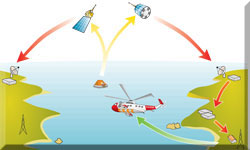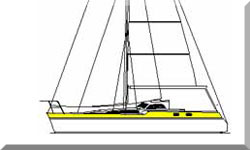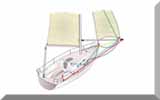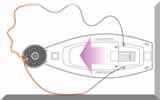Tiller Pilots: Your Questions Answered
Tiller pilots are compact autopilot systems designed for boats with tiller steering. They help maintain a steady course without manual steering, making them ideal for solo sailors or those who want to focus on other tasks while navigating. These devices are typically mounted in the cockpit and can be easily removed when not in use.
Modern tiller pilots come equipped with advanced features such as precision fluxgate compasses, easy-to-use control panels, and networking capabilities to integrate with other instruments like GPS and wind sensors. They are reliable, user-friendly, and can handle various boat sizes and conditions.
How effectively does the tiller pilot handle various sea states and wind conditions?
How effectively does the tiller pilot handle various sea states and wind conditions?
The effectiveness varies greatly depending on the specific model. Basic models might struggle in significant wave action or strong winds, leading to course deviations and increased power consumption due to constant corrections.
More advanced units, with sophisticated algorithms and robust sensors, handle a wider range of conditions more effectively, anticipating wave patterns and reacting smoothly to gusts.
However, extreme conditions like confused seas or large following waves can challenge even the best tiller pilots, where manual steering often provides optimal control and minimizes strain on the equipment.
What are the different steering modes available (e.g., compass, wind angle - apparent and true, GPS tracking, waypoint navigation) and how well do they work?
What are the different steering modes available (e.g., compass, wind angle - apparent and true, GPS tracking, waypoint navigation) and how well do they work?
- Compass Mode: Maintains a fixed magnetic heading. Useful for motoring or when wind/waves are the primary factors in course deviation. Accuracy can be affected by local magnetic anomalies.
- Apparent Wind Angle Mode: Keeps a consistent angle relative to the apparent wind, suitable for reaching and close-hauled sailing in steady breezes. However, changes in wind speed will alter your course over ground.
- True Wind Angle Mode: Requires integration with a true wind sensor, factoring in boat speed. It allows sailing a consistent course relative to the true wind direction, beneficial for upwind and downwind sailing even with apparent wind shifts.
- GPS Tracking/Waypoint Navigation: When integrated with a GPS, it steers towards a waypoint or along a route. Accuracy depends on the GPS signal and the tiller pilot's ability to compensate for currents and leeway.
How customizable are the pilot's settings (e.g., gain, damping, response time) to optimize performance for different boat characteristics and sailing conditions?
How customizable are the pilot's settings (e.g., gain, damping, response time) to optimize performance for different boat characteristics and sailing conditions?
More sophisticated units offer adjustable parameters.
- Gain controls the amount of rudder correction.
- Damping smooths out oscillations.
- Response time adjusts how quickly the pilot reacts.
Optimal settings vary based on boat design, displacement, and sea/wind conditions. The ability to save custom profiles for different scenarios is a valuable feature.
Can the tiller pilot be effectively integrated with other onboard instruments (e.g., wind instruments, GPS, compass, AIS) to enhance its functionality and provide more accurate steering?
Can the tiller pilot be effectively integrated with other onboard instruments (e.g., wind instruments, GPS, compass, AIS) to enhance its functionality and provide more accurate steering?
Integration is crucial for enhanced functionality.
- Wind instruments enable true and apparent wind steering.
- GPS allows for navigation and potentially automated manoeuvres.
- A good compass feed ensures accurate heading.
- AIS integration on advanced systems can provide alerts and even initiate avoidance.
Compatibility relies on standard data protocols like NMEA 0183 and NMEA 2000.
What is the power consumption of the tiller pilot under different loads and how does this impact the boat's electrical system, especially on longer passages?
What is the power consumption of the tiller pilot under different loads and how does this impact the boat's electrical system, especially on longer passages?
Power draw varies. Standby consumption is minimal. Light steering in calm conditions draws less power than heavy steering in strong winds and waves. Over long passages, the cumulative power consumption can be significant. Monitoring battery levels and utilizing appropriate charging sources is essential. Efficient pilots and balanced sailing reduce power consumption.
How quickly does the tiller pilot react to changes in wind and waves?
How quickly does the tiller pilot react to changes in wind and waves?
A slow-reacting pilot leads to course deviations and inefficient sailing. A well-tuned pilot anticipates and corrects promptly without overshooting. An overly sensitive pilot makes constant, small corrections, wasting power and causing unnecessary helm movement. The ideal reaction time depends on the boat and the conditions.
What is the expected lifespan of the unit and what are the common failure points, especially in a saltwater environment?
What is the expected lifespan of the unit and what are the common failure points, especially in a saltwater environment?
Lifespan depends on build quality and care. Common failure points include motor burnout, drive mechanism wear or breakage, water ingress into electronics, and corrosion of electrical connections. UV degradation can also damage components.
How robust is the tiller pilot's drive mechanism and its resistance to shock loads, for example, from large waves or accidental snagging?
How robust is the tiller pilot's drive mechanism and its resistance to shock loads, for example, from large waves or accidental snagging?
A robust drive mechanism made of durable materials is essential. Resistance to shock loads is vital to prevent damage from sudden, large forces on the rudder. Some units have overload protection.
Is the unit easily repairable at sea, and are spare parts readily available in various cruising destinations?
Is the unit easily repairable at sea, and are spare parts readily available in various cruising destinations?
Tiller pilots are generally simpler to repair than full autopilots. However, complex electronic failures often require professional attention. Spare parts availability varies by brand and location. Carrying essential spares is advisable for extended voyages.
How well is the unit sealed against water ingress, and what preventative maintenance is recommended to ensure its longevity?
How well is the unit sealed against water ingress, and what preventative maintenance is recommended to ensure its longevity?
Good sealing (IP rating) is crucial. Preventative maintenance includes regular rinsing with fresh water, inspection for damage and corrosion, ensuring tight connections, and protecting from direct spray and UV exposure. Following manufacturer recommendations for lubrication and storage is also important.
What are the critical factors to consider during installation to ensure optimal performance and prevent damage to the unit or the boat?
What are the critical factors to consider during installation to ensure optimal performance and prevent damage to the unit or the boat?
Proper alignment with the tiller arm, secure mounting on a strong surface, correct electrical wiring with appropriate fusing, ensuring a full and unobstructed range of motion, and post-installation calibration are all critical for optimal performance and longevity.
How user-friendly is the control interface, especially in challenging conditions (e.g., at night or in rough seas)?
How user-friendly is the control interface, especially in challenging conditions (e.g., at night or in rough seas)?
A clear, backlit display with large, tactile buttons and an intuitive menu system is essential for ease of use in adverse conditions. Quick access to essential functions is vital.
Does the unit offer advanced features like automatic tacking or gybing, and how reliable are these functions?
Does the unit offer advanced features like automatic tacking or gybing, and how reliable are these functions?
Some higher-end units offer automated tacking and gybing, which can be helpful for shorthanded sailing as it frees the helmsman for controlling the sails during the course change. However, their reliability depends on proper setup and the prevailing conditions. Understanding their limitations and being prepared to intervene manually is important.
Are there any safety features built into the tiller pilot, such as an audible alarm for significant course deviations or overload protection for the drive unit?
Are there any safety features built into the tiller pilot, such as an audible alarm for significant course deviations or overload protection for the drive unit?
Safety features like course deviation alarms and overload protection for the drive motor are valuable additions. Some units may also have automatic disengagement in case of prolonged stalls.
What are the common troubleshooting steps for issues like the pilot not holding a course, erratic steering, or motor failure?
What are the common troubleshooting steps for issues like the pilot not holding a course, erratic steering, or motor failure?
Troubleshooting involves checking power connections, calibration, obstructions in the steering system, integration with other instruments, and the physical mounting and drive mechanism of the pilot. Consulting the manufacturer's manual is essential.
What regular maintenance tasks are required to keep the tiller pilot functioning correctly?
What regular maintenance tasks are required to keep the tiller pilot functioning correctly?
Regular maintenance includes cleaning, inspection for damage and corrosion, lubrication of moving parts as recommended, ensuring secure mounting, and periodic calibration checks.
Are there any known compatibility issues with other brands or types of marine electronics?
Are there any known compatibility issues with other brands or types of marine electronics?
Compatibility issues can arise due to different data protocols (NMEA 0183, NMEA 2000) or sensor requirements. Ensuring all connected devices use compatible protocols and wiring, and potentially using interface converters, is necessary for seamless integration. Consulting the manuals for all devices is crucial.
Recent Articles
-
Wheel-Steering Autopilots: Your Questions Answered...
Apr 18, 25 03:45 PM
Whatever your question, you should find the answer here -
Tiller Pilots: Your Questions Answered...
Apr 18, 25 08:18 AM
Got a question about sailboat tiller pilots? Odds are, you'll find the answer here -
Is Marine SSB Still Used?
Apr 15, 25 02:05 PM
You'll find the answer to this and other marine SSB-related questions right here...
